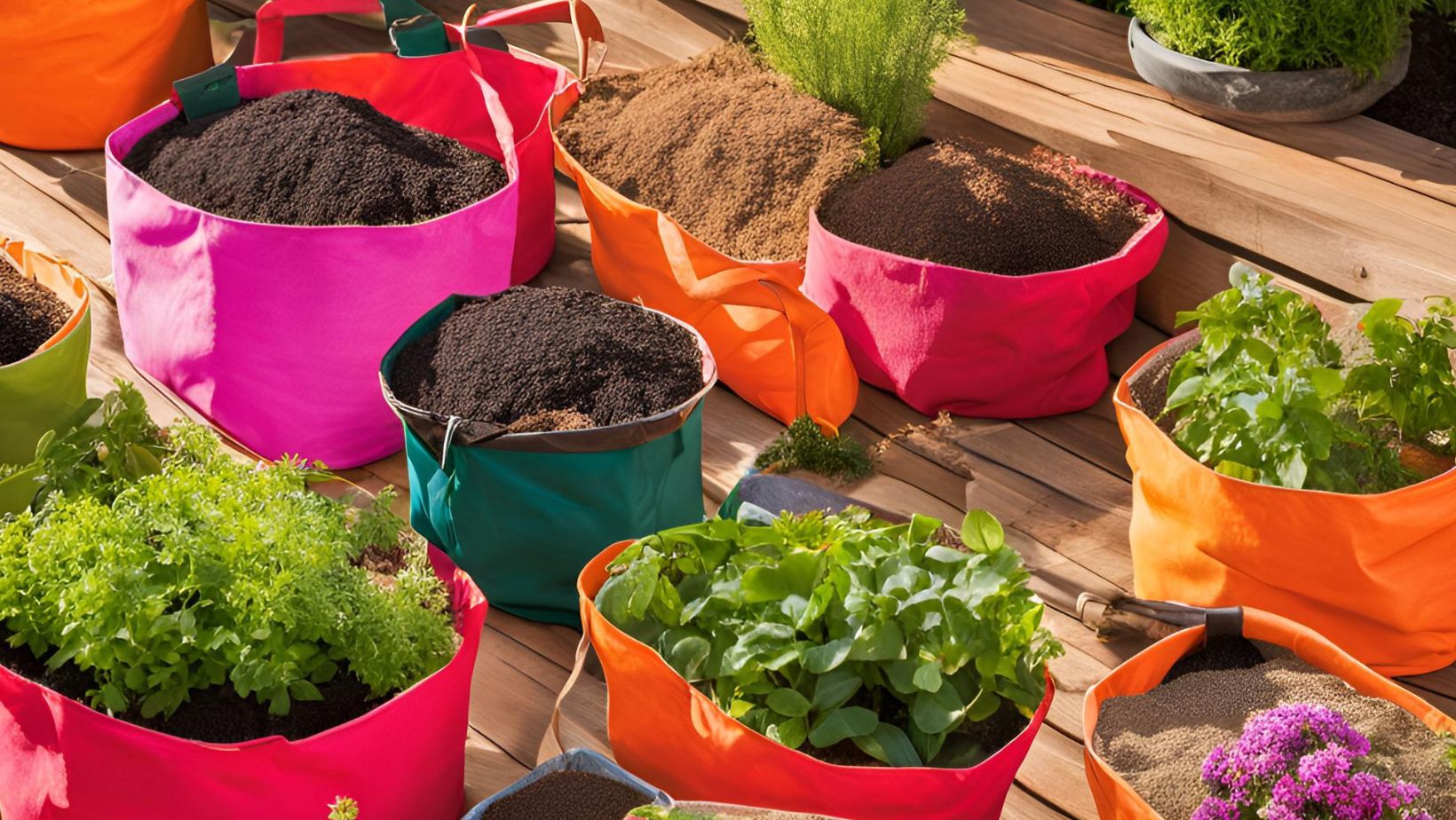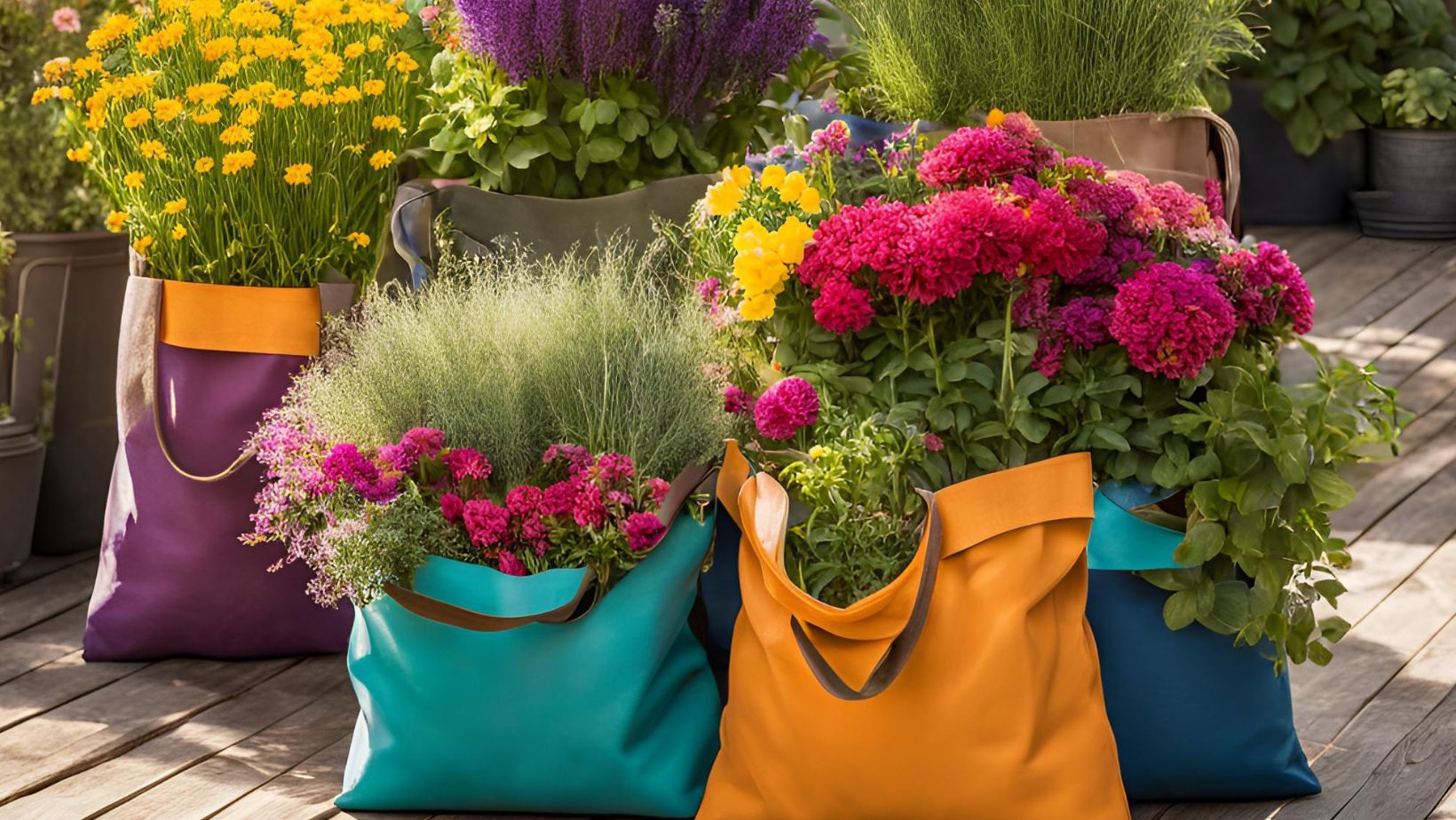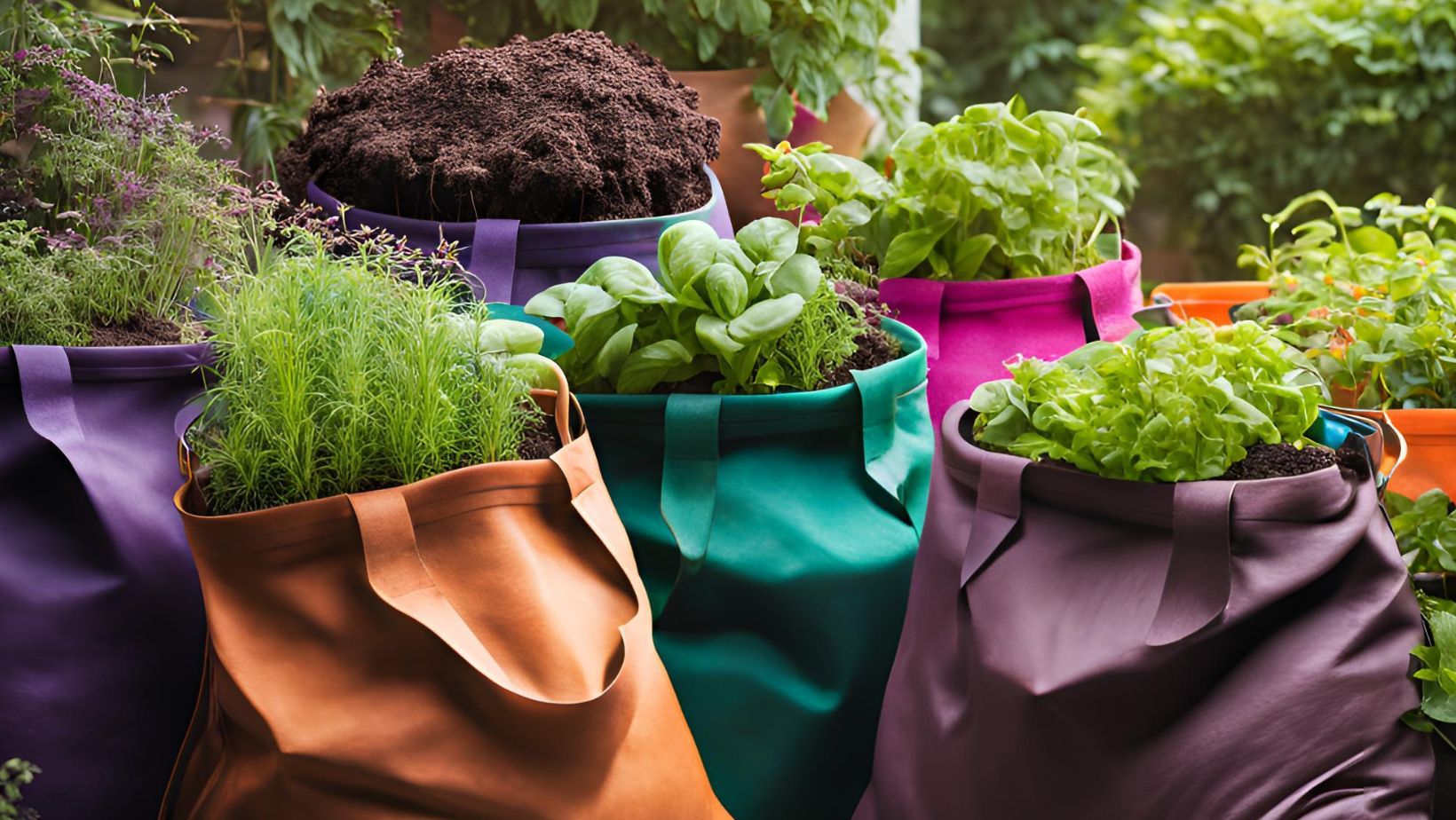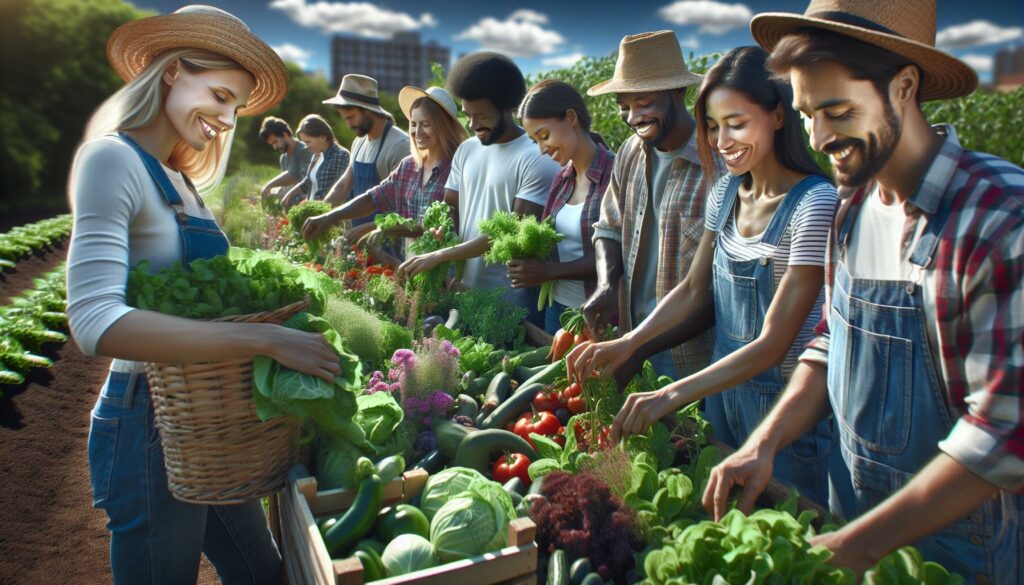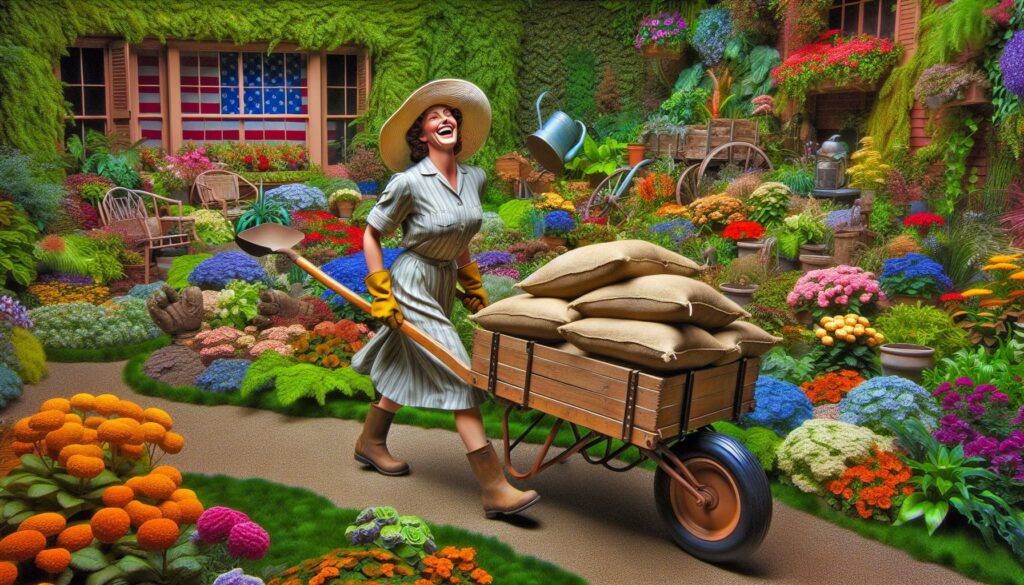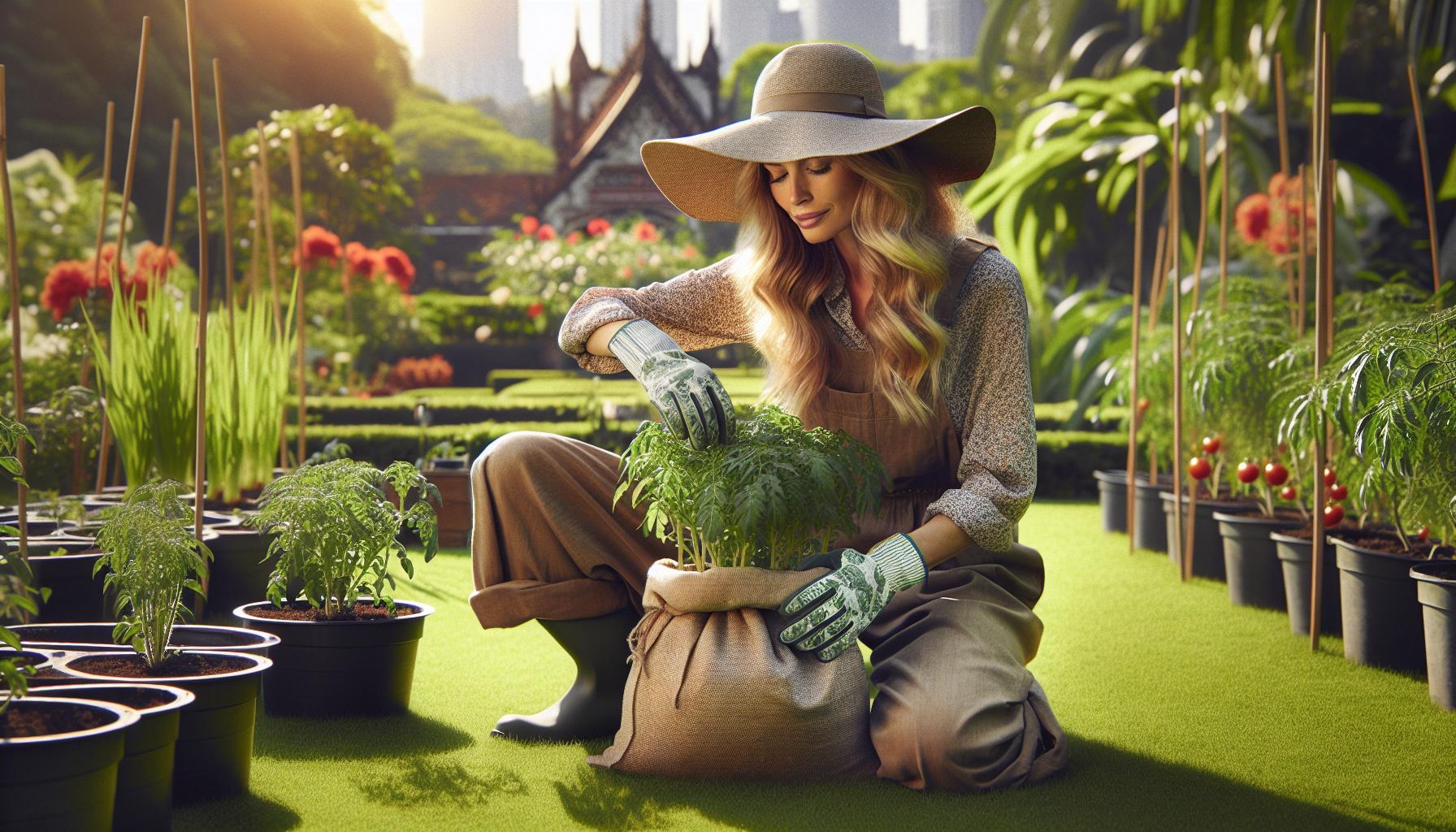
As an avid gardener, I’ve discovered that grow bags for gardening are revolutionizing the way we think about home gardening. These flexible fabric containers offer a practical solution for growing plants in limited spaces while providing superior root health compared to traditional pots.
I remember when I first started using grow bags in my urban garden. What caught my attention wasn’t just their affordability but also their incredible versatility. Whether you’re growing tomatoes on a balcony or creating a full vegetable garden in your backyard these portable planters make gardening accessible to everyone. Plus they’re perfect for both beginners and experienced gardeners who want to maximize their growing space without compromising on plant health.
Key Takeaways
- Grow bags for gardening are portable fabric containers that promote better root health through air pruning – a process where roots naturally stop growing when exposed to air, creating denser root systems
- These gardening containers are made from various materials including polypropylene, geotextile fabric, felt, and hemp, with durability ranging from 2-7 years depending on the material type
- The porous fabric design provides superior benefits over traditional pots, including automatic drainage, enhanced oxygen flow, better temperature regulation, and prevention of root circling
- Different plants require specific grow bag sizes – herbs need 1-3 gallons, peppers 5-7 gallons, tomatoes 10-15 gallons, and potatoes 20 gallons for optimal growth
- Proper maintenance includes regular watering (often 2-3 times daily in hot weather), using well-draining soil mix (60% potting soil, 20% compost, 20% aerators), and avoiding common mistakes like overfilling
Grow Bags for Gardening
Grow bags for gardening are portable fabric containers designed specifically for growing plants, featuring a porous material that promotes healthy root development. I’ve found these innovative gardening solutions revolutionize plant growth through their unique design and functionality.
The Science Behind Fabric Growing Containers
Grow bags for gardening utilize a process called air pruning, where roots naturally stop growing when exposed to air through the fabric walls. This creates a dense, fibrous root system that maximizes nutrient uptake and water absorption. The porous fabric maintains optimal soil temperature while preventing waterlogging by:
- Allowing excess moisture to evaporate through container walls
- Providing continuous oxygen flow to the root zone
- Creating natural drainage without additional holes
- Preventing root circling common in plastic containers
Common Materials Used in Grow Bags
The effectiveness of grow bags for gardening depends significantly on their construction materials. Here are the primary materials I’ve encountered in quality grow bags:
- Nonwoven polypropylene: Durable synthetic fabric with excellent drainage
- Geotextile fabric: Professional-grade material with superior air pruning capabilities
- Felt: Natural material offering good moisture retention balance
- BPA-free fabric: Food-safe material ideal for vegetable growing
- Hemp fabric: Eco-friendly option with natural antimicrobial properties
| Material Type | Durability (Years) | Air Pruning Efficiency | Cost Range ($) |
|---|---|---|---|
| Polypropylene | 3-5 | High | 5-15 |
| Geotextile | 5-7 | Very High | 15-30 |
| Felt | 2-3 | Moderate | 10-20 |
| Hemp | 2-4 | High | 20-35 |
Benefits of Using Grow Bags for Plants
Growing plants in fabric grow bags offers distinct advantages over traditional containers, enhancing both plant health and gardening efficiency. Here’s why I’ve found grow bags to be exceptional for plant cultivation.
Superior Root Development
The porous fabric of grow bags for gardening creates an environment that promotes robust root development through air pruning. When roots reach the bag’s edges, they stop growing outward and instead branch into smaller feeder roots. I’ve observed my plants in grow bags develop:
- Dense fibrous root systems that maximize nutrient absorption
- Enhanced lateral root growth for improved stability
- Prevented root circling common in plastic containers
- Increased root mass leading to stronger plants
- Balanced root-to-shoot ratios for optimal growth
- Automatic drainage that prevents root rot
- Consistent soil moisture levels through evaporation
- Enhanced oxygen flow to root zones
- Temperature regulation in the root zone
- Protection against overwatering issues
| Feature | Traditional Pots | Grow Bags |
|---|---|---|
| Air Pruning | Limited | Extensive |
| Root Circulation | Common | Rare |
| Drainage | Manual holes | 360° natural |
| Temperature Control | Variable | Self-regulating |
| Oxygen Flow | Restricted | Continuous |
Best Plants to Grow in Garden Bags
Grow bags for gardening accommodate various plant types through their superior aeration and root development features. I’ve successfully grown numerous plants in grow bags, discovering which varieties thrive best in this growing medium.
Vegetables That Thrive in Grow Bags
These vegetables demonstrate exceptional growth performance in grow bags:
- Plant tomatoes in 15-20 gallon bags, spacing plants 12 inches apart
- Grow peppers in 5-7 gallon bags with 1-2 plants per container
- Cultivate potatoes in 20-gallon bags, adding soil as plants grow
- Space bush beans in 10-gallon bags with 4-6 plants per container
- Plant cucumbers in 10-15 gallon bags with vertical support structures
- Maintain eggplants in 5-7 gallon bags with individual spacing
- Arrange leafy greens like lettuce spinach in 5-gallon bags with 4-inch spacing
| Vegetable | Grow Bag Size (Gallons) | Plants per Bag | Growth Period (Days) |
|---|---|---|---|
| Tomatoes | 15-20 | 2-3 | 60-80 |
| Peppers | 5-7 | 1-2 | 60-90 |
| Potatoes | 20 | 3-4 | 90-120 |
| Bush Beans | 10 | 4-6 | 50-65 |
- Plant basil cilantro parsley in 3-gallon bags with 6-inch spacing
- Grow mint in separate 2-gallon bags to prevent spreading
- Cultivate marigolds zinnias in 5-gallon bags for pest control benefits
- Arrange lavender rosemary in 5-gallon bags with proper drainage
- Place petunias snapdragons in 3-gallon bags for decorative displays
- Maintain oregano thyme in 2-gallon bags with 8-inch spacing
- Plant chamomile sage in 3-gallon bags with afternoon shade protection
| Plant Type | Grow Bag Size (Gallons) | Spacing (Inches) | Sun Exposure |
|---|---|---|---|
| Herbs | 2-3 | 6-8 | Full/Partial |
| Annual Flowers | 3-5 | 8-12 | Full Sun |
| Perennial Herbs | 5 | 12 | Full Sun |
| Small Flowers | 2-3 | 6 | Partial/Full |
Choosing the Right Size and Material
Selecting appropriate grow bag dimensions and materials directly impacts plant health and garden success. I’ve tested various combinations to identify the most effective options for different gardening needs.
Popular Grow Bag Sizes
Common grow bag sizes range from 1 to 100 gallons, with specific applications for each capacity:
| Bag Size (Gallons) | Ideal Plants | Number of Plants |
|---|---|---|
| 1-3 | Herbs, Microgreens | 2-3 herbs |
| 5-7 | Peppers, Lettuce | 1-2 vegetables |
| 10-15 | Tomatoes, Eggplants | 1 large plant |
| 20-30 | Potatoes, Squash | 3-4 root crops |
| 50-100 | Fruit trees, Multiple plants | 1 tree/4-6 plants |
The optimal size depends on:
- Root depth requirements
- Plant spread at maturity
- Number of plants per container
- Available space constraints
- Intended growing duration
Fabric Options and Durability
Grow bag materials affect longevity and plant performance:
- Nonwoven Polypropylene
- Lasts 3-5 growing seasons
- Excellent air pruning properties
- UV-resistant construction
- Cost-effective option
- BPA-free Fabric
- Premium durability (5+ seasons)
- Enhanced temperature regulation
- Chemical-free composition
- Higher initial investment
- Hemp Fabric
- Natural biodegradable material
- 2-3 season lifespan
- Superior moisture retention
- Environmentally sustainable
- Geotextile Fabric
- Industrial-grade strength
- 4-6 season durability
- Maximum aeration capacity
- Professional-grade option
Material thickness ranges from 200g/m² to 400g/m², with heavier materials offering increased durability. I’ve found that 300g/m² provides the optimal balance between longevity and cost for most home gardening applications.
Essential Care and Maintenance Tips
Grow bags for gardening require specific maintenance practices to ensure optimal plant growth and longevity. I’ve developed these proven care techniques through extensive testing in my garden to maximize the benefits of grow bag cultivation.
Proper Watering Techniques
Grow bags for gardening demand more frequent watering than traditional containers due to their enhanced drainage properties. I follow these key watering practices:
- Monitor moisture levels daily by inserting a finger 2 inches into the soil
- Water slowly around the base of plants until water drips from the bottom
- Apply water 2-3 times during hot days to maintain consistent moisture
- Use drip irrigation systems for automatic watering on a set schedule
- Place saucers under bags when growing on decks or patios
- Add mulch layers of 1-2 inches to reduce water evaporation
Soil and Fertilizer Requirements
The soil mix in grow bags affects drainage capacity nutrient retention. Here’s my tested approach:
| Component | Percentage |
|---|---|
| Potting Soil | 60% |
| Compost | 20% |
| Perlite | 10% |
| Vermiculite | 10% |
- Apply slow-release organic fertilizer every 4-6 weeks
- Use liquid fertilizer at half strength every 2 weeks during growing season
- Add compost tea monthly to improve soil biology
- Incorporate bone meal for root crops
- Mix in blood meal for leafy greens
- Include kelp meal for micronutrient balance
Common Mistakes to Avoid
Based on my extensive experience with grow bags for gardening, I’ve identified several critical errors that can compromise plant growth and bag longevity. Here’s how to prevent these common pitfalls.
Overfilling and Poor Drainage
Overfilling grow bags creates dense, compacted soil that restricts root growth and water movement. I fill my grow bags to 80% capacity, leaving 2-3 inches of space at the top for proper watering and soil settling. The drainage system requires:
- Elevating bags 1-2 inches off the ground using pot feet or wooden blocks
- Creating 6-8 drainage holes in the bottom corners when using non-porous materials
- Spacing multiple bags 4-6 inches apart for adequate airflow
- Adding a 1-inch layer of gravel or perlite at the bottom for enhanced drainage
Incorrect Plant Selection
Matching plants to appropriate bag sizes ensures optimal growth and prevents root binding. Here’s my tested size-to-plant ratio guide:
| Bag Size (Gallons) | Suitable Plants | Maximum Plants per Bag |
|---|---|---|
| 1-3 | Herbs, Lettuce | 2-3 herbs, 4-6 lettuce |
| 5-7 | Peppers, Eggplants | 1-2 plants |
| 10-15 | Tomatoes, Cucumbers | 1 plant |
| 20-25 | Small fruit trees | 1 tree |
- Planting deep-rooted vegetables in shallow bags
- Overcrowding multiple plants in single containers
- Growing climbing plants without proper support structures
- Selecting plants incompatible with fabric material porosity
Transform your Gardening Journey
Growing my plants in grow bags for gardening has revolutionized my gardening experience. These versatile containers offer an incredible blend of practicality portability and plant health benefits that traditional pots simply can’t match. I’ve seen firsthand how the innovative design promotes healthier root systems and stronger plants while making gardening more accessible to everyone.
Whether you’re a balcony gardener or managing a larger garden space grow bags are a game-changing solution. I’m confident that with proper sizing material selection and maintenance these affordable containers will transform your gardening journey just as they’ve transformed mine. Take the leap into grow bag gardening – your plants will thank you for it.

